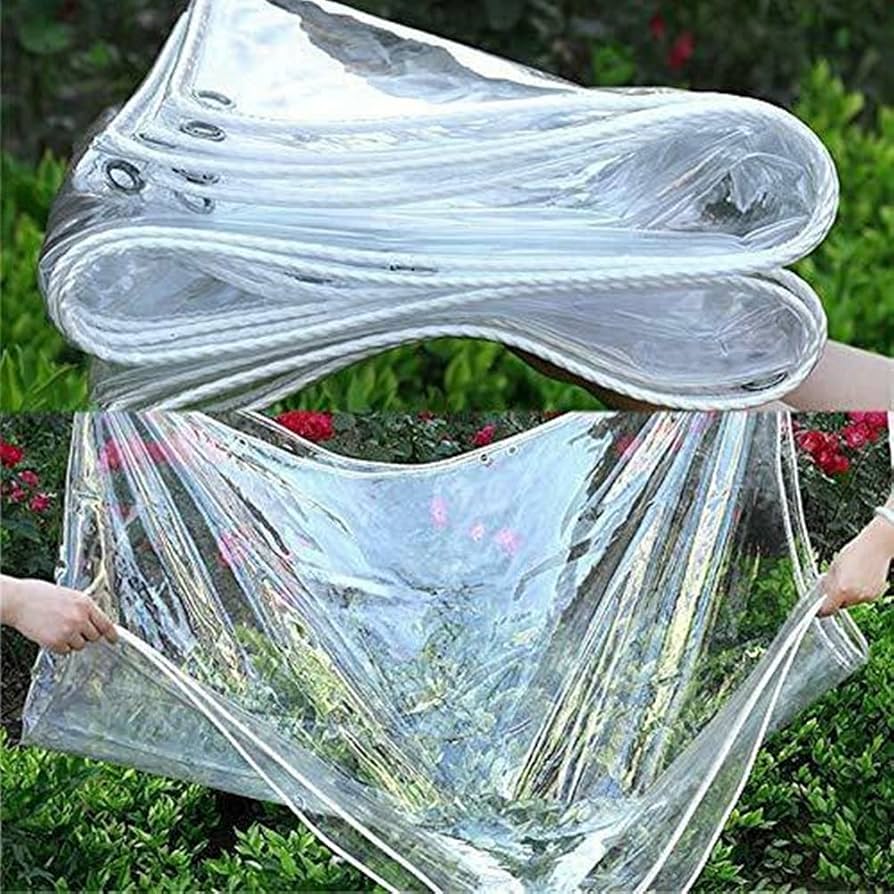Clear Tarpaulin Sheets: Visibility Meets Protection
What are Clear Tarps?
Clear Tarpaulin Sheet give a transparent guarded covering to things that need protection while staying aware of visibility. Created areas of strength for using light-sending materials like polyethylene or PVC, clear tarps safeguard things from ecological parts like deluge, snow, sun, soil and trash, yet allow light to go through so the covered things are as yet apparent.
Clear tarps arrive in various sizes to oblige everything from little household things to gigantic advancement materials, vehicles, and horticultural hardware or yields. Their transparent nature separates them from customary dinky tarps, offering coverage without hindrance of visibility. Whether used for storage, transportation, or protection on places of work, clear tarps have transformed into an imperative covering for both business and private applications where kept audit is fundamental.
Benefits of Clear Tarps
Clear tarps give a few key benefits:
Visibility
As their name proposes, clear tarps allow light transmission so covered things stay apparent. This is significant for applications like inspecting or monitoring safeguarded hardware, supplies or plants.
Weather Protection
Their tough yet lightweight materials like PVC or polyethylene effectively safeguard covered things from storm, snow, sun, soil and garbage. This safeguarding safeguards adventures.
Durability
Clear tarps are made to withstand wind and other parts without tearing or penetrates to stay aware of coverage. Their reinforced materials and creases guarantee protection perseveres.
Portability
Lightweight clear tarps roll, crease or gathering for advantageous vehicle, storage and future reuse with unimportant effort.
Low Cost
Giving quality protection, clear tarps offer affordable coverage compared to more unambiguous (and costly) decisions.
Where to Use Clear Tarps
Clear tarps have a wide assortment of uses thanks to their mix of visibility and weatherproof protection. Here are the absolute most normal applications:
Vehicle/Boat Storage
Whether storing a vehicle, truck, RV, boat or other vehicle momentarily or long stretch, a clear tarp makes a guarded hindrance from parts without frustrating the capacity to beware of or move the vehicle effectively when required.
Choosing the Right Clear Tarp
With various material creations and particulars accessible, choosing the legitimate clear tarp for the normal use case is significant. Key factors to consider include:
Material Type
The two overpowering materials for clear tarps are polyethylene (PE) and polyvinyl chloride (PVC). PE tarps will generally be more thin and more malleable, while PVC gives most outrageous durability and resistance to weathering yet is less adaptable. Ponder the tarp's normal circumstances.
Thickness
Heavier Clear Tarpaulin going from 4-10 mil thickness hold up best to wind and other parts anyway are less versatile. Lighter 2-4 mil tarps capability admirably for impermanent uses and overlap up more minimalistic ally. Match necessities to tarp weight.
Size
Measure the area and aspects that anticipate that coverage should guarantee the tarp is colossal enough without inordinate additional material. Tarps regularly come in standard sizes from 4x6 feet to 20x100 feet or are specially made for specialty applications.
Attachment Hardware
Tarps with grommets or reinforced secure points along edges make secure anchoring through ropes, bungees or stakes more straightforward. Consider hardware expected taking into account tarp size and anticipated weather. Bungees suit ordinary use better compared to stakes for very durable yields.
UV Resistance
Clear poly films not UV-treated may ruin observably speedier when introduced to coordinate sun long stretch. Search for UVR-appraised tarps if not covered or moved discontinuously.
Installing and Using Clear Tarps Effectively
Appropriate installation and use is critical to getting the most protection from clear tarps. Here are more point by point best practices:
Inspect for Defects - Track down an open door to carefully unroll the entire tarp and really look at the different sides under moderate light for any openings, breaks, penetrates or other imperfections that could mull over. Give close consideration to creases. Fix little defects with tarp fix tape. Supplant tarps that have unique or enormous issues.
Surface Preparation - Clear or blow away flotsam and jetsam, leaves or free soil from the entire area to be covered. For roof or ground applications, pull away potential vacillating items near edges. Guarantee the surface is totally dry before installation. A daintily wet surface can cause the tarp paste to flounder rashly.
Anchor Points - Conclude suitable anchor points around the tarp line considering its size. All things considered, space anchors something like 10 feet separated on roof applications and 5 feet for ground uses. For tarps using grommets, run rope or airplane interface through the openings and secure solidly with stakes, rebar stakes or carabiners joined areas of strength for to like lumber, vehicles, or ranch gear. Bungee lines or lashes capability admirably too anyway may require more progressive tensioning.
Overlap Edges - Start by spreading out the tarp parts or fragments arranged along one edge, leaving a 12-18 inch overlap. Overlay under the top half somewhat and apply line or gorilla tape along inside flaw to bond the two layers together. Run tape the entire length of all overlapped edges.
Taut Installation - Starting at the center, pull outward on the anchor points and secure them while an ensuing individual guarantees no hanging. Bit by bit work outwards from the middle towards the edges, pulling each part taut before affixing. Stay away from free pockets that could gather dampness.
Maintenance - Check occasionally, particularly after profound weather, for any slackening. Re-fix anchors and address any new defects rapidly to avoid water entrance. Inspect twice yearly for wear, obscuring or penetrates that compromise coverage. Fix or supplant contingent upon the situation.
Conclusion
In conclusion, clear tarps give both visibility and convincing weather protection for many applications. Their transparent materials keep an unhampered point of view on covered things while safeguarding against ecological dangers like deluge, snow, sun and flotsam and jetsam.

